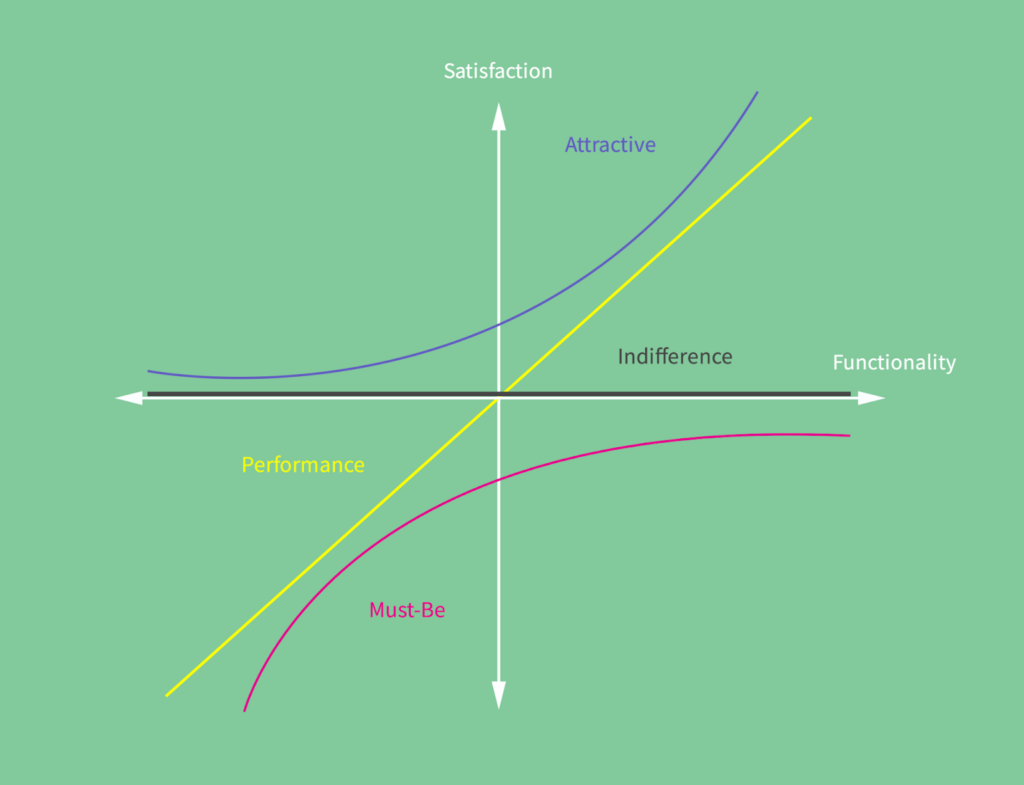
Why Creating a Proper Path to Purchase Matters
- Product Design /
- Product Discovery /
There are plenty of tools we utilize in the lifecycle of digital product design UX to understand customers. They are essential not only in creating a fluid experience for first-time customers, but also for improving the experience for the existing customers. Understanding how to most effectively create clarity and focus for customers as they perform their “job to be done” and proceed on their “path to purchase” is key to your business’s longevity and success. In this article, we’ll explain what we mean by “job to be done” and “path to purchase,” as well as how they align to provide the best possible experience for your customers.
Customers Perform Jobs, And They Hired You
This may come as a bit of a surprise, but customers do not casually try products and services that appeal to them. Instead, they hire businesses and organizations to achieve very specific outcomes. They can also fire these same businesses and organizations if those outcomes cannot be achieved.
Once the customer has identified your digital product or service as a potential means to achieving an outcome they desire, they will hire your business or organization so they can perform an outcome-based job to be done. It’s important to note that a “job to be done” is different from a task or use-case. It specifies what the outcome is versus describing how or when it is achieved.
Simply knowing that a job to be done is outcome-focused is a good start, but to really appreciate why they are so important to understand, we need to look beyond the surface. So how do “jobs to be done” come about? Quite simply, they are born out of a desire to achieve a goal that is not spontaneously or otherwise serendipitously created.
Jobs to be done are designed within our minds. Advertising is the perfect anecdote to explain because it focuses entirely on this very concept as its core.

The “Think Different” advertising campaign Apple ran in the late 90s through the early 00s pushed both existing and potential customers to, well, think differently. Not just about their computing choices, but their entire persona. The latter is the founding basis of a job to be done.
Understanding the Job to be Done
Over a lifetime, customers will have many influences that l resonate with them, shaping their purchasing decisions. These influences create desire (I want to be like these famously ‘different’ people), and this desire manifests itself through design within our minds (because I want to be seen as different I need to embrace it).
A job to be done is quite simply the action a customer must take to achieve their desires and fulfill their ultimate goal (I want to buy products that help me stand out and be different.)
There is a caveat in understanding the subtle variations of jobs to be done between different customer types. For example, a homeowner will have a different rationale for buying a cordless drill than a building contractor. The former may prioritize price. The latter may prioritize durability. A tool we often use to gain greater understanding of different customer types (as audiences) and their respective needs is called empathy mapping.
By engaging in this exercise one can get a general sense of what an audience’s ultimate goal is as well as gain insight into influences, pain points, and tasks performed. The ultimate goal is a way to phrase success for a job to be done.
The Path to Purchase Isn’t Just Customers Buying Stuff
When we consider a statement like “path to purchase,” it’s easy to think about a linear pathway a customer takes to pay for a particular product or service. The challenge is that this thinking isn’t entirely incorrect, but it is missing significant detail.

As you can see above, Purchase is towards the tail end of the linear path to purchase process. But in order to reach the stage of purchase, customers have to trust that your tool can not only solve a particular problem, but satisfy their job to be done as part of an ultimate goal.
Walking Through the Path to Purchase
Let’s look now at each step in short fashion so we can understand the critical details you need to know within the path to purchase.
Discovery/Awareness
As a potential customer is performing research, they may find your tool/service through paid advertising or search terms. What is important is that when they discover it, it resonates with them from how it’s positioned in the market. Two tools we often employ at Emerge to learn what customers need during their journey and how businesses service these needs are journey mapping and service blueprinting respectively.
Consideration
Once they find you, customers will naturally compare your product and services to your direct competition. In the advertising world, a value proposition is what differentiates you from your chief competitors. The same is true for digital products and services. Is your product similar to another offering customers could find cheaper elsewhere? If the answer is yes, you may want to re-think the vision of your product or service to gain alignment with your chief stakeholders to ensure it’s positioned correctly within the market.
Purchase
Once they’ve considered all of their options, it’s time for the customer to purchase and use your digital product or service. And even though they’ve seemingly committed to your solution, the user experience here is absolutely critical to nail. If the customer feels like this process is difficult, cumbersome, or hard to interpret they may abandon it entirely.
This is particularly critical for first time customers, where having a well-defined and thorough onboarding process greatly improves your chances of successful adoption. In the digital product and service world, purchase can also still be a manual process, but it is more rapidly becoming a self-driven process.
Review/Feedback
The path to purchase doesn’t actually end at the purchase — in fact it creates a circular loop. You need reviews because they fuel new & repeat business. Anyone who shops using Amazon knows the value of positive user reviews and feedback. Reviews can positively or negatively affect new or existing customers in their decision to make a purchase.
The best way to plan ahead and understand how your digital product or service stacks up directly from potential or existing customers is through moderated and unmoderated user testing. This can be performed before or after products and services are live, but it’s most helpful before launch or MVP release.
Connecting the Dots Between Your Customer’s Work to Be Done and their Path to Purchase
Now that we have a better understanding of customers’ jobs to be done and their path to purchase considerations, how exactly do they work in tandem? How can a better experience be made for your customers?
As we’ve seen, “jobs to be done” is not something that is created by customers spontaneously. It takes time for them to arrive at the idea of a solution that may solve their problem. By the time they arrive at the discovery/awareness stage of the path to purchase,they have a fairly good idea of what they want from the process, even if what their needs have yet to be clearly defined. This all said — each step of the path to purchase needs to feel considered when it comes to what your product or service offers to new or existing customers.
Whether you are visualizing, discussing, or having customers directly interact with your digital products or services, here are three ways in which you can ensure your digital product or service hits the mark most effectively across the entire customer lifecycle.
1. Prioritize Valuable Features
Features may make up an entire digital experience from a literal perspective, but without value these features won’t carry much meaning or weight with customers. Having too many features may also be a sign that your user experience has become overly complex and unnecessarily saturated. Certain features may be duplicates or redundant. A prioritization matrix of user value vs level of effort can help.
2. Understand What Creates Delight
Which valuable features create delight? Many features exist as table stakes when it comes to satisfying a customer’s job to be done even if they’re valuable. Some will make a notably more profound experience for your customers. This delight can create product champions among your top customers and build your brand overall through positive user feedback. One such method we employ to understand what creates delight versus maintaining the bar is the Kano Model.

3. Align on MVP
One of the most hotly debated principles in the digital product and service space is the term MVP, or Minimum Viable Product. This may be the most basic bare-bones compilation of features just to attain a base-level understanding of feedback from user testing. It may be evolved to a fully designed and developed digital product or service that is ready for customer prime-time as a first release.
The challenge with the latter is that it can be presumptuous to think the customer path to purchase and jobs to be done are perfectly accounted for. Performed incorrectly, this has the potential to backfire on your brand since you’re now setting a precedent with customers in the real world. Remember, first impressions matter.
Take Time To Assess & Make The Right Decision
Understanding your customers’ jobs to be done and mapping their path to purchase are key to designing a stellar product experience. By taking the time to research what your audiences really need to accomplish and what motivates them to “hire” your product, you gain insight to build features that add true value.
Walking through the discovery, consideration, purchase and feedback steps reveals where friction and delight occur along the journey. Connecting these insights ensures your product both fulfills its core purpose and wows users along the way.
In the end, keeping the customer at the center of your process is what matters most. Continuously test your assumptions, validate direction with real users, and be ready to iterate based on feedback. Building a product or service that effectively guides customers through their jobs to be done and path to purchase is no easy feat, but doing so enables your solution to become an indispensable part of their lives.
Emerge specializes in understanding the customer journey, how businesses intersect with it, and how to optimize operational efficiency to meet them directly. If you’d like to consult with us, reach out to get more information.